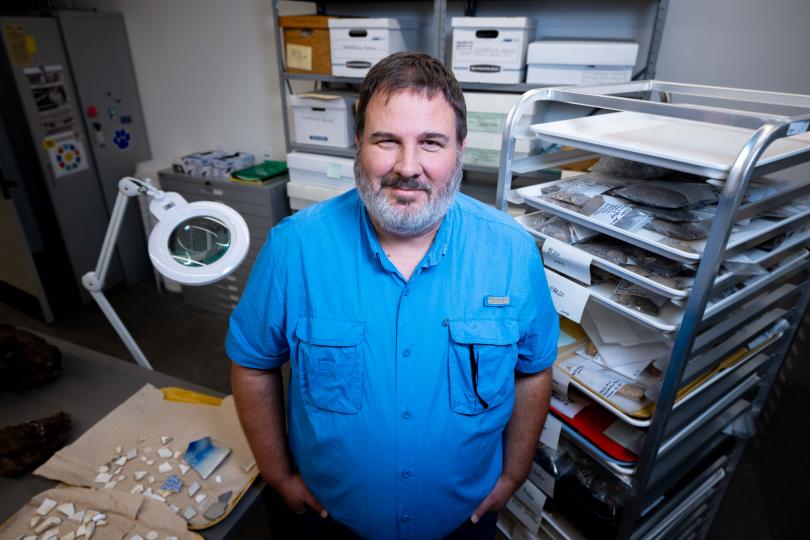By Jennifer T. Allen

LEXINGTON, Ky. -- Philip Mink, in the University of Kentucky Department of Anthropology in the College of Arts and Sciences, has been named director of the Office of State Archaeology and the William S. Webb Museum of Anthropology.
Mink has been at UK for 25 years, most recently serving as the assistant director of the Office of State Archaeology. He replaces longtime director George Crothers, who recently retired.
“The work of these two entities is significant. It’s critical that we document the history of the Commonwealth and I think it’s especially important that this be done at the flagship university of the Commonwealth,” Mink said.
"Philip Mink’s appointment as director of the Webb Museum of Anthropology and the Office of State Archaeology is not only a testament to his dedication and expertise but also a vital step in preserving Kentucky's rich cultural heritage,” said Ana Franco-Watkins, dean of the College of Arts and Sciences. “His vision for expanding our exhibits and enhancing educational outreach will ensure that the stories of our past continue to inspire future generations. We are thrilled to have him at the helm as we work to document and celebrate the distinct history of our Commonwealth.”
The Kentucky Antiquities Act requires that any archaeological site found in Kentucky must be reported to the Office of State Archaeology at UK. They also issue permits for any work done on public lands in the state. Mink estimates his office has about 30,000 sites recorded and receives about 1,000 requests for archaeological data a year. Almost every development project occurring in the state comes through the Office of State Archaeology to ensure there will be no damage to these irreplaceable resources. If archaeological surveys are conducted and artifacts collected, they are often curated at The Webb Museum, the primary repository for archaeological collection in Kentucky.
“It’s important that we maintain the long history of archeology at UK,” he said. “We have about 12,000 years of human history represented in our collection that we utilize to examine all the diversity we have in the state from Eastern Kentucky to Western Kentucky, from Northern Kentucky to Southern Kentucky. It’s important that UK plays a role in making sure that information is preserved and available for research and study for our faculty, staff, and students.”
At one time, the department counted at least 5 million artifacts from sites across the state, from the earliest Native Americans who arrived in Kentucky to items that are more recent.
“We have a broad range of stuff from National Register sites and National Historic Landmarks in the state, like Big Bone Lick, Boonesboro state parks and Camp Nelson National Monument,” Mink said. “We have spear points and arrow heads, pottery, bits and pieces of textiles that are prehistoric, and animal and palaeobotanical remains. We also have a large number of historic artifacts including a saltpeter trough from Mammoth Cave and are working with folks to try to get some more Kentucky-centric ethnographic modern material.”

There is a small exhibit in Lafferty Hall on UK’s campus that is in the works to be updated, Mink said.
“I would like to expand our exhibits and education and research,” he said. “We have so much data and we want people to know it’s here. We have 12,000 years' worth of data covering the human history of Kentucky.”
Mink recalled a project he was involved in at Carter Cave State Park in the entrance of one of the caves. He found old soda bottles that the guides would give guests after the tours were over discarded in a small hole at the exit of the cave. But looking in the entrance of the cave where the lights were turned on and off, he found a little whisky bottle and other items where he could tell the guides hung out after hours.
"It’s those little type of things that indicate that you’re looking at human behavior. Nobody else knows about that, but I can tell that story because of what I’m finding. I’m finding pop bottles here and a whiskey bottle there and that tells a story of what was going on in Carter Caves many years ago,” Mink said. “Archaeology often tells the stories that are not written in history books.”
Learn more about the William S. Webb Museum of Anthropology here.
